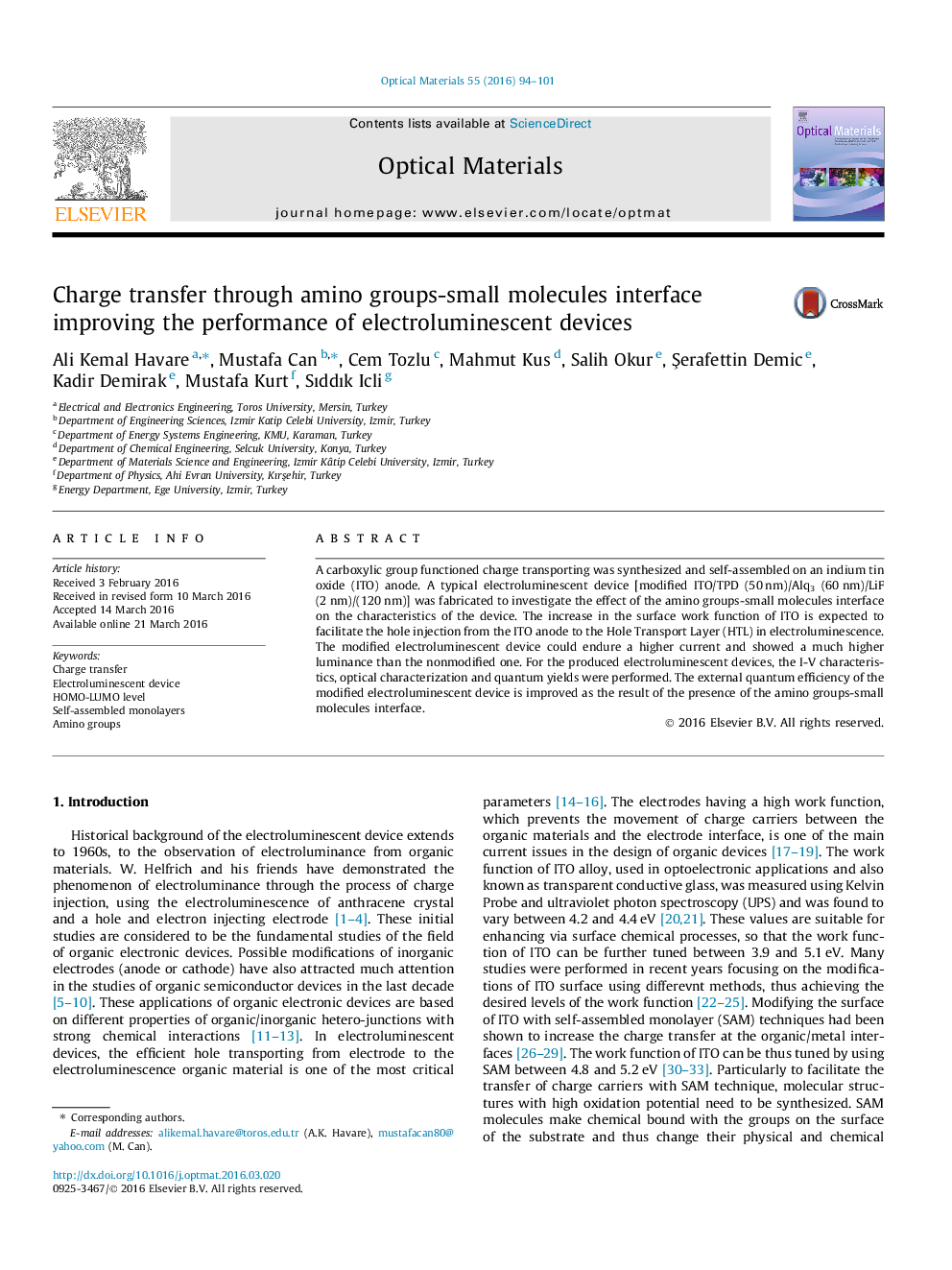| Article ID | Journal | Published Year | Pages | File Type |
|---|---|---|---|---|
| 1493338 | Optical Materials | 2016 | 8 Pages |
•An electroluminescent device was prepared to investigate the effect of charge transfer through amino groups-small molecules interface as hole injection layer.•For the produced electroluminescent devices, the I-V characteristics, optical characterization and quantum yields were performed.•The SAM-modified device could endure a higher current and showed a much higher luminance (1390 cd/m2) than the bare ITO device (57 cd/m2) and better external quantum efficiency.
A carboxylic group functioned charge transporting was synthesized and self-assembled on an indium tin oxide (ITO) anode. A typical electroluminescent device [modified ITO/TPD (50 nm)/Alq3 (60 nm)/LiF (2 nm)/(120 nm)] was fabricated to investigate the effect of the amino groups-small molecules interface on the characteristics of the device. The increase in the surface work function of ITO is expected to facilitate the hole injection from the ITO anode to the Hole Transport Layer (HTL) in electroluminescence. The modified electroluminescent device could endure a higher current and showed a much higher luminance than the nonmodified one. For the produced electroluminescent devices, the I-V characteristics, optical characterization and quantum yields were performed. The external quantum efficiency of the modified electroluminescent device is improved as the result of the presence of the amino groups-small molecules interface.
